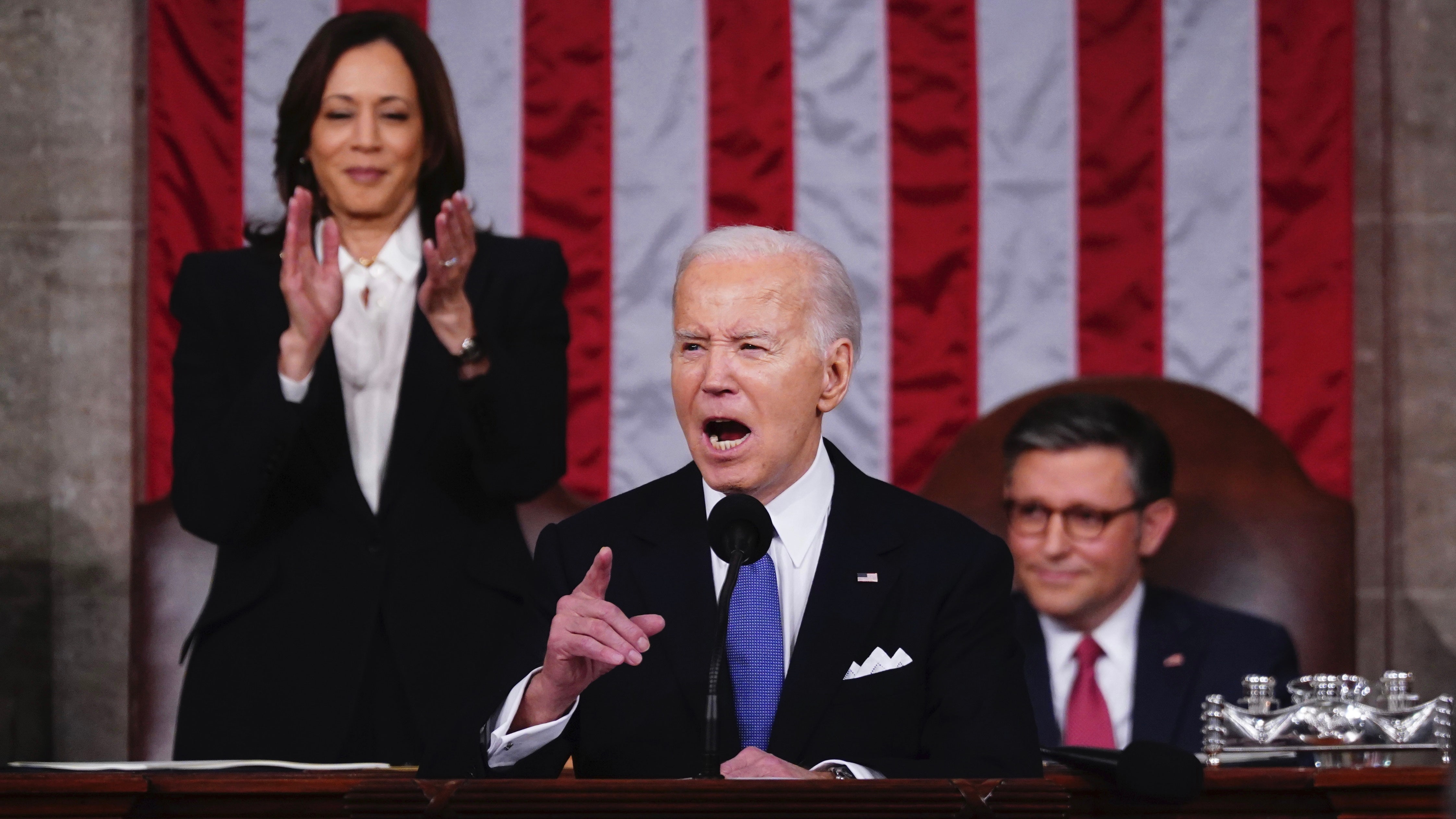President Joe Biden's administration has played a pivotal role in reforming and advancing hospice care in the United States. Through policy changes and funding initiatives, the administration has sought to improve access to quality end-of-life care for all Americans. This article explores the impact of Biden's policies on hospice care and their significance for patients and families.
As the U.S. population continues to age, the demand for hospice services is on the rise. Recognizing this growing need, President Biden has introduced several measures aimed at enhancing the quality and accessibility of hospice care. These efforts reflect a commitment to ensuring that all individuals receive compassionate and dignified care during their final stages of life.
This article delves into Biden's initiatives, the challenges faced in implementing them, and their potential long-term effects on the hospice care system. By examining the administration's approach, we can better understand the future of hospice care in America and the benefits it offers to those in need.
Read also:Paris Hiltons Son Condition A Comprehensive Insight
Table of Contents
- Understanding Hospice Care
- Biden's Vision for Hospice Care
- Key Policies and Initiatives
- The Impact of Biden's Policies
- Challenges in Implementation
- The Role of Technology in Hospice Care
- Funding and Financial Support
- Collaboration with Healthcare Providers
- Patient and Family Perspectives
- The Future of Hospice Care
Understanding Hospice Care
Hospice care is a specialized form of healthcare designed to provide comfort and support to patients with terminal illnesses. It focuses on improving the quality of life for both patients and their families during the final stages of life. Hospice services typically include pain management, emotional support, and spiritual care.
According to the National Hospice and Palliative Care Organization (NHPCO), hospice care serves over 1.5 million Americans annually. The demand for these services is expected to increase as the baby boomer generation ages.
What Makes Hospice Care Unique?
- Hospice care emphasizes palliative treatment rather than curative measures.
- It provides holistic support, addressing physical, emotional, and spiritual needs.
- Services are often delivered in the patient's home, fostering a familiar and comforting environment.
Biden's Vision for Hospice Care
President Joe Biden has outlined a comprehensive vision for improving hospice care in the United States. His administration aims to expand access to these services, enhance the quality of care, and ensure equitable treatment for all patients. Central to this vision is the belief that hospice care should be accessible to everyone, regardless of socioeconomic status.
Core Principles of Biden's Vision
Biden's approach to hospice care is guided by three core principles: accessibility, quality, and equity. These principles are reflected in various policy proposals and initiatives designed to address the challenges facing the hospice care system.
Key Policies and Initiatives
The Biden administration has introduced several key policies aimed at transforming hospice care. These include increased funding for hospice programs, expanded Medicare coverage, and support for caregiver training. By addressing these areas, the administration seeks to create a more robust and responsive hospice care system.
Medicare Expansion
One of the most significant initiatives is the expansion of Medicare coverage for hospice services. This change ensures that more Americans can access these vital services without facing financial barriers. According to a report by the Centers for Medicare & Medicaid Services (CMS), this expansion is expected to benefit millions of patients and families.
Read also:James Earl Of Wessex The Life And Legacy Of A Royal Figure
The Impact of Biden's Policies
The implementation of Biden's policies has already begun to show promising results. Hospice programs across the country are reporting increased enrollments and improved patient satisfaction. These outcomes underscore the positive impact of the administration's efforts to enhance hospice care.
Success Stories
- Increased patient enrollment in hospice programs.
- Improved satisfaction rates among patients and families.
- Enhanced support for caregivers and healthcare providers.
Challenges in Implementation
Despite the progress made, several challenges remain in implementing Biden's hospice care initiatives. These include funding constraints, workforce shortages, and resistance from certain stakeholders. Addressing these challenges will require continued commitment and collaboration from all parties involved.
Addressing Workforce Shortages
One of the primary challenges facing the hospice care system is a shortage of qualified healthcare professionals. The Biden administration is working to address this issue through training programs and incentives for caregivers. These efforts aim to ensure that there are enough skilled professionals to meet the growing demand for hospice services.
The Role of Technology in Hospice Care
Technology plays a crucial role in modernizing hospice care and improving patient outcomes. Telehealth services, electronic health records, and other digital tools have transformed the way care is delivered. Under Biden's leadership, the adoption of these technologies has accelerated, enabling more efficient and effective hospice care.
Advantages of Telehealth in Hospice Care
- Improved access to care for patients in remote areas.
- Enhanced communication between patients, families, and healthcare providers.
- Reduced costs associated with in-person visits.
Funding and Financial Support
Funding is a critical component of Biden's hospice care strategy. The administration has allocated significant resources to support hospice programs, including grants, subsidies, and tax incentives. These financial resources are essential for ensuring the sustainability and growth of hospice services nationwide.
Grants and Subsidies
Through various federal programs, the Biden administration provides grants and subsidies to hospice organizations. These funds are used to improve facilities, train staff, and expand services. According to a report by the U.S. Department of Health and Human Services (HHS), these investments are yielding tangible results in terms of improved patient care.
Collaboration with Healthcare Providers
Successful implementation of Biden's hospice care initiatives requires collaboration with healthcare providers. The administration works closely with hospitals, clinics, and other stakeholders to develop and implement best practices. This collaborative approach ensures that all parties are aligned in their efforts to enhance hospice care.
Best Practices in Hospice Care
By adopting best practices, healthcare providers can deliver high-quality hospice care that meets the needs of patients and families. These practices include regular staff training, patient-centered care, and ongoing evaluation of services. The Biden administration encourages providers to adopt these practices as part of their commitment to excellence in hospice care.
Patient and Family Perspectives
Understanding the perspectives of patients and families is essential for improving hospice care. Feedback from those who have experienced hospice services firsthand provides valuable insights into their needs and preferences. The Biden administration actively seeks this feedback to inform its policy decisions and program developments.
Gathering Feedback
Through surveys, focus groups, and other methods, the administration collects feedback from patients and families. This information is used to refine policies and programs, ensuring they meet the diverse needs of the population. By prioritizing patient and family voices, the administration demonstrates its commitment to patient-centered care.
The Future of Hospice Care
The future of hospice care in the United States looks promising under Biden's leadership. With continued investment, innovation, and collaboration, the hospice care system is poised to evolve and expand. These developments will ensure that all Americans have access to high-quality, compassionate end-of-life care.
Looking Ahead
- Continued policy development and refinement.
- Increased adoption of technology and telehealth services.
- Expansion of training programs for hospice professionals.
Conclusion
Biden's initiatives have significantly impacted the landscape of hospice care in the United States. Through policy changes, funding allocations, and collaborative efforts, the administration has made strides in improving access to and quality of hospice services. As the population continues to age, these efforts will become increasingly important in ensuring that all individuals receive the care they deserve.
We invite you to share your thoughts and experiences in the comments section below. Your feedback helps us improve and expand our coverage of important topics like hospice care. Additionally, feel free to explore other articles on our site for more insights into healthcare and related issues.

